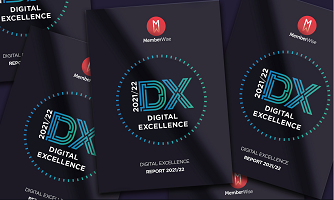The MemberWise Digital Excellence Report was published in June 2021, and there was an alarming statistic which jumped out- something that could seriously be affecting membership retention and acquisition.
Despite 70% of Membership Organisations agreeing there is a reliance on data to operate more effectively; only 28% of Membership Organisations agreed they have all their critical systems integrated.
What’s more, the report also showed that only 13% organisations consider their staff to have confidence in the accuracy of available data.
This is a worrying figure.
Why is this a problem?
The MemberWise Report claimed: “Ideally, membership systems should be integrated and data should be flowing. Data should be stored centrally for ease of access/use, however if not possible, the use of new/emerging solutions can help to at least connect or bridge the gap.”
Member acquisition, member retention and member engagement were three of the top priorities in the sector according to the report. Without integrating critical systems, not only is it hard to access the quality data you need, but it’s also almost impossible to segment it to make your marketing efforts more effective.
If staff do not have confidence in the accuracy of the available data, will they be able to make well-informed business decisions?
Or, can they make reliable strategies to boost their acquisition or retention levels?
Put simply, membership organisations without integrated systems are at serious risk of missing their membership targets.
This is where a data warehouse comes in
A data warehouse (or system integration as you may have heard of it before), is a central interface that pulls together data from separate systems and displays it on a modern dashboard. When managing data on multiple systems, it is a time-consuming effort to update and extract information from separate systems. So, you spend less time extracting data; and more time analysing data.
Firstly, what’s the difference between a data warehouse and databases?
The purpose of a database is to store and record data; in our case, this could be: member details, organisation costs, member engagement, event information, and project details. A data warehouse, however, is specifically designed for data analysis, and can extract data from multiple databases to make analysing business data quicker and easier. It is perfect for storing and summarising large volumes of historical data.
What are the benefits?
The MemberWise Digital Excellence Report found member retention, engagement and acquisition were three of the top priorities for membership bodies. Once a data warehouse is implemented, your organisation can benefit from it in many ways to improve these efforts.
Being able to access quality business data from one central location enables you to make more informed business decisions and run your organisation efficiently. The security of the data you hold can also be tightened.
Data warehousing is an increasingly important business intelligence tool with many benefits, including:
- Data quality and consistency: Data warehouses are programmed to display data in the same format; regardless of how it was initially stored. When data has been standardised, it ensures consistency and accuracy throughout the organisation. This also makes it easier for decision makers to analyse and share data insights with colleagues.
- Better decision making: The most effective decision makers plan their strategies based on data and facts. A data warehouse improves the speed and efficiency of accessing data from across your organisation, making it easier to analyse trends and insights. Data warehouses store credible, quality data, facts and statistics, which decision makers (such as membership directors and marketing managers) can extract and analyse to direct their strategies.
- Quick and easy to access data: Speed is an important factor that sets your membership body as an industry leader. This makes it easier for decision makers to make informed business decisions and analyse data insights. This allows you to make quick and accurate decisions, with little or no support from your IT department.
A data warehouse is essential for a membership body that wants to utilise their historical data to make informed business decisions. By analysing historical organisation data, you can make reliable, data-driven marketing strategies to boost your membership retention and acquisition rates.
Being able to extract business data from multiple sources in one place (on one format) can save serious time when generating reports, so you have more time to focus on your organisation’s objectives.
PSP-IT has worked with some of the largest chartered institutes and membership bodies for more than a decade. Our work includes system integration, where we have transformed organisations with state-of-the-art data warehouses, CRM and system integration. If you’re looking to implement a data warehouse for your membership body, give us a call today: 01775 722377










Leave A Comment